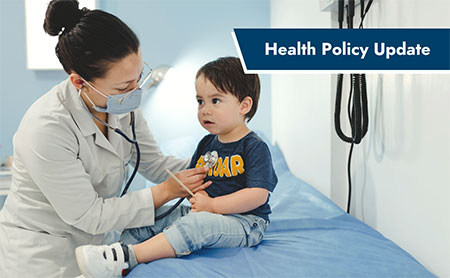Lead, Food Safety, and Public Health’s Power and Responsibility to the People
March 08, 2024 | Maggie Davis

In fall 2023, the North Carolina Department of Health and Human Services (NCDHHS) identified apple cinnamon fruit puree as the likely source of elevated blood lead levels found in children. The state’s routine childhood lead poisoning prevention laws, which encourage all children to be tested at one and two years old and legally requires all laboratories within the state to report the results of all environmental lead and blood lead tests for children up to the age of six, enabled state and local public health leaders to investigate quickly. Following NCDHHS’ analysis and report, FDA issued a safety alert advising parents and caregivers not to buy or feed the identified brand of fruit puree; the manufacturer agreed to voluntarily recall all affected products.
NCDHHS, FDA, and CDC further identified two additional brands of apple cinnamon fruit puree potentially adulterated with lead and unsafe to eat. The investigation further revealed that the identified products were produced in Ecuador and FDA worked with their Ecuadorian counterparts to identify the likely contaminant—cinnamon that had more than 2,000 times the level of lead deemed safe by international food code standards. As of February 9, 2024, at least 422 complaints or adverse events were reported to CDC across 44 states related to adulterated fruit puree products. The median age of a person exposed to the products is one year. Public health agencies have since worked to remove the adulterated fruit puree products with FDA issuing recalls.
Even low levels of lead exposure in childhood can have long-lasting health effects, including potential brain damage, slowed growth and development, as well as difficulty hearing and speaking. Some children have acute symptoms after ingesting lead, including stomach pain, weakness and fatigue and neurological symptoms like seizures. Public health leaders routinely use primary prevention strategies (e.g., removing lead paint from older homes) and secondary prevention strategies (e.g., testing children at higher risk for lead poisoning) to mitigate exposure among children. Children in lower-income families have a higher risk for lead exposure, with Black children having the highest prevalence of elevated blood lead levels.
Leveraging Public Health Authority to Prevent Childhood Lead Exposure
States have broad powers to adopt laws promoting health and safety, with every state using those powers to identify potential cases of childhood lead exposure. Along with Medicaid’s requirement that all enrolled children be tested at 12 and 24 months, at least 20 jurisdictions have laws requiring child blood level screenings outside of the Medicaid program. Additionally, every jurisdiction requires clinical laboratories to report blood level test results to the public health department. Some states limit reporting based on age or the level of lead found in a blood sample, such as Pennsylvania, which requires clinical laboratories to report all blood lead test results for persons under 16 years of age and lead levels of 25 micrograms per deciliter (mcg/dL) or higher for all people.
These reports enable public health agencies to fulfill a core responsibility to its residents—to protect the health and welfare by identifying and remediating pathogens or substances that could cause illness, injury, disability, or death. As public health leaders across all levels of government continue to respond to the lead contamination, state legislatures are working to refine and expand their childhood lead exposure laws.
State Legislative Action to Increase Childhood Lead Testing
In 2023, Delaware enacted HB 227, clarifying that all children’s lead screening and testing results, regardless of the child’s age, must be reported to the state public health department. Further, to help ensure that all children in the state are screened for potential lead exposure, the department of public health will provide proof of a child’s lead screening to the school nurse as part of the student’s health record. School districts and charter schools will need to annually report the number of students enrolled in kindergarten who have not been screened for lead or a statement from the child’s parent or guardian that such screening is contrary to their religious or personal beliefs.
In legislative sessions to date in 2024, at least five jurisdictions considered bills related to childhood blood lead level screenings. Massachusetts is considering S 2578, which specifies the health department’s responsibility to identify children with concerning blood lead levels (defined as 5 to less than 10 micrograms per deciliter). Hawaii is deliberating SB 2682, which would expand the blood level testing requirement to all children under age six (currently only required for Medicaid-enrolled children in that age group). After five years, the bill would allow the health department to adjust the testing recommendation and submit a report to the legislature outlining their findings and rationale for adjusting the requirement. Michigan is considering HB 5368, which would lower the threshold for “elevated blood levels” in children from 10 mcg/dL to 3.5 mcg/dL, aligning with CDC’s most recent blood level reference value.
ASTHO will continue to monitor this important policy topic and share updates as appropriate.